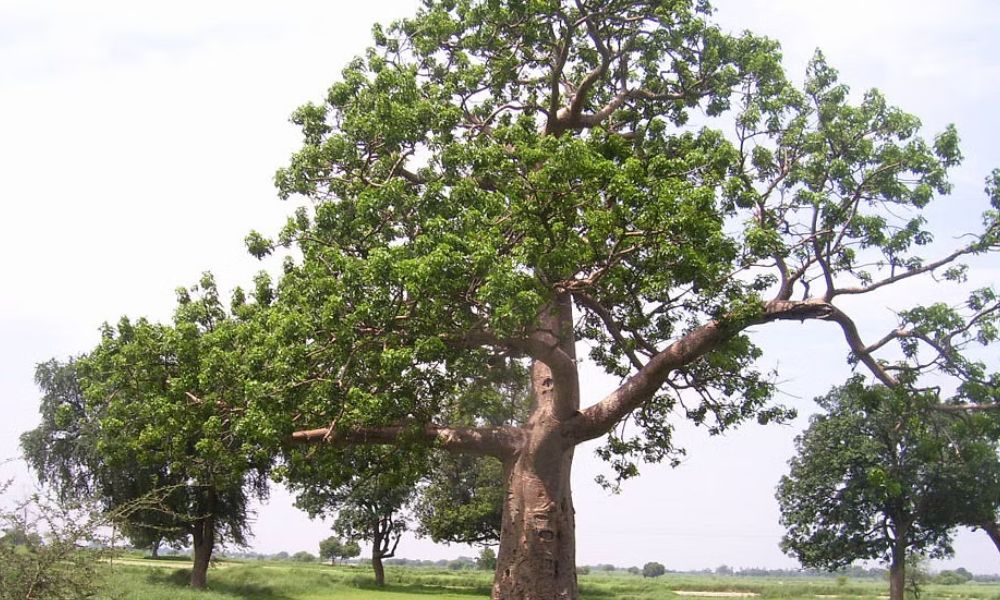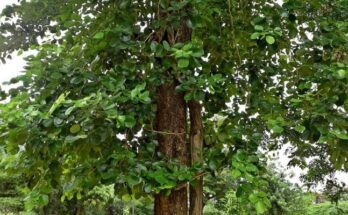|
Getting your Trinity Audio player ready...
|
The Parijat tree, also known as the “Night-flowering Jasmine” or “Tree of Sorrow,” is a mystical and revered tree in Hindu mythology. It is believed to have healing properties and is used in Ayurvedic medicine to treat various ailments. Let’s explore the fascinating world of the Parijat tree and its significance in Hindu culture.
Parijat Tree Scientific Classification
| Classification Type | Classification Status |
|---|---|
| Kingdom | Plantae |
| Clade | Tracheophytes |
| Clade | Eudicots |
| Clade | Angiosperms |
| Clade | Asterids |
| Species | N. arbor-tristis |
| Family | Oleaceae |
| Genus | Nyctanthes |
| Order | Lamiales |
10 Benefits of Parijat Tree

1. Medicinal properties: The Parijat tree has been used in traditional Ayurvedic medicine for centuries. The tree’s leaves, flowers, and bark are all used to treat various ailments such as fever, arthritis, rheumatism, and digestive disorders.
2. Anti-inflammatory: The Parijat tree has strong anti-inflammatory properties, which make it an effective natural remedy for inflammation-related conditions like arthritis.
3. Antioxidant: The tree’s leaves and flowers are rich in antioxidants that help protect the body from free radicals, reducing the risk of diseases like cancer and cardiovascular diseases.
4. Anti-microbial: Parijat tree extracts have been shown to have antimicrobial properties, which make them effective in treating various bacterial and fungal infections.
5. Digestive aid: The Parijat tree is an excellent digestive aid, thanks to its anti-inflammatory properties. It helps soothe the digestive tract and relieve conditions like bloating and constipation.
6. Skincare: The Parijat tree has been used for centuries in traditional Indian medicine to treat skin conditions like eczema and psoriasis. Its anti-inflammatory and antioxidant properties make it effective in soothing irritated skin and promoting healing.
7. Immune booster: The Parijat tree is an excellent immune booster. Its antioxidant and anti-inflammatory properties help strengthen the body’s immune system, reducing the risk of infections and diseases.
8. Respiratory health: The tree’s leaves and flowers are used in traditional medicine to treat respiratory conditions like asthma, bronchitis, and cough. Its anti-inflammatory and anti-microbial properties help soothe the respiratory tract and reduce inflammation.
9. Stress relief: The Parijat tree has been shown to have calming properties, which make it an effective natural remedy for stress and anxiety.
10. Aromatherapy: The tree’s delicate, fragrant flowers make it an excellent choice for aromatherapy. Its calming scent can help reduce stress, and anxiety, and promote relaxation.
Must Read: Sal Tree | Fruit, Wood, Leaves, Medical Uses, & Health Benefits
Know about Parijat Tree Flower

The Parijat tree flower is unique in its appearance, scent, and symbolism, making it a favorite of gardeners and flower enthusiasts around the world.
Appearance: The Parijat tree flower is small and delicate, with five to eight petals that are arranged in a star-like shape. The petals are pure white in color, with a yellow center and long stamens that protrude from the flower. The flowers bloom in clusters of two or three, and they have a unique texture that is both soft and velvety to the touch.
Scent: One of the most striking features of the Parijat tree flower is its sweet and intense fragrance. The flowers emit a strong, fruity aroma that is reminiscent of orange blossom, with a hint of jasmine and gardenia. The scent of the Parijat flower is most potent at night, making it a popular choice for evening gardens and fragrant pathways.
Symbolism: The Parijat tree flower holds great significance in Hindu mythology and Indian culture. According to legend, the tree was a gift from the gods to the earth, and its flowers were given to the hero Arjun as a symbol of victory. The flower is also associated with love and devotion, and it is believed to bring good luck and happiness to those who keep it in their homes.
Growing and Caring: The Parijat tree is relatively easy to grow and care for, making it a popular choice for gardens and landscapes. The tree requires full sun and well-drained soil, and it should be watered regularly during the growing season. It is also essential to fertilize the tree with a balanced fertilizer to encourage healthy growth and blooming.
Legend of the Parijat Tree: According to Hindu mythology, the Parijat tree originated during the Churning of the Ocean (Samudra Manthan) when the gods and demons were trying to obtain the elixir of immortality (Amrita). The Parijat tree is said to have sprung from the celestial waters and was gifted to Lord Krishna by the gods. The tree is associated with the tale of the love between Lord Krishna and Satyabhama, his queen.
Must Read: Rosewood Tree | About | Health Benefits | Uses | Flowers & Leaves
Unique Characteristics of the Parijat Tree
The Parijat tree is a deciduous tree that grows up to 10 meters tall. Its leaves are simple, green, and lance-shaped, and its flowers bloom at night, emitting a sweet fragrance. The flowers are white and delicate with orange-red stalks, and they bloom for only a few hours before falling off the tree. The tree’s fruit is a small, round capsule that contains five seeds.
Cultural Significance of the Parijat Tree

The Parijat tree holds a special place in Hindu culture and is often associated with love, sorrow, and death. The tree is considered a symbol of hope, and its flowers are used in religious ceremonies and offerings to deities. In some regions of India, the tree is also used in traditional medicine and is believed to have the power to ward off evil spirits.
Threats to the Parijat Tree
Despite its cultural and medicinal significance, the Parijat tree is under threat due to deforestation, urbanization, and climate change. The tree is now a protected species in India, and efforts are being made to conserve and propagate it. The Parijat tree is a reminder of the delicate balance between nature and culture and the need to protect both.
In conclusion
The Parijat tree is a mystical and revered tree with a rich cultural and medicinal significance. It is a symbol of hope, love, and the delicate balance between nature and culture. It is our responsibility to protect and conserve this magnificent tree for future generations to enjoy.
Must Read: Rudraksha Tree | History, Types, Benefits, Facts & How to Grow?



